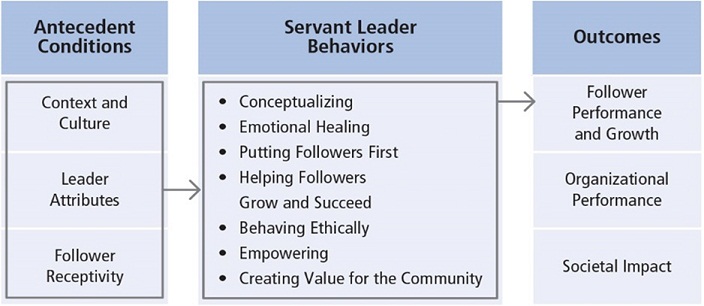Assignment: Servant Leadership Takes flight
A young mother traveling with a toddler on a long cross-country flight approached the flight attendant looking rather frantic. Because of weather and an hour-and-a-half wait on the runway to take off, the plane would arrive at its destination several hours late. The plane had made an intermediate stop in Denver to pick up passengers but not long enough for travelers to disembark. The mother told the attendant that with the delays and the long flight, her child had already eaten all the food she brought and if she didn't feed him soon he was bound to have a total meltdown. "can I get off for five minutes just to run and get something for him to eat?" she pleaded.
"I have to recommend strongly that you stay on the plane," the attendant said, sternly. But then, with a smile, she added, "But I can get off. The plane won't leave without me. What can I get your son to eat?"
Turns out that flight attendant not only got the little boy a meal, but brought four other children on board meals as well. Anyone who has traveled in a plane with screaming children knows that this flight attendant not only took care of some hungry children and frantic parents, but also indirectly saw to the comfort of a planeload of other passengers.
This story doesn't surprise anyone familiar with Southwest airlines. The airline's mission statement is posted every 3 feet at all Southwest locations: Follow the Golden rule-treat people the way you want to be treated.
It's a philosophy that the company takes to heart and begins with how it treats employees. Colleen Barrett, the former president of Southwest airlines, says the company's cofounder and her mentor, herb Kelleher, was adamant that "a happy and motivated workforce will essentially extend that goodwill to Southwest's customers" (Knowledge@ Wharton, 2008). If the airline took care of its employees, the employees would take care of the customers, and the shareholders would win, too.
From the first days of Southwest airlines, Herb resisted establishing traditional hierarchies within the company. He focused on finding employees with substance, willing to say what they thought and committed to doing things differently. described as "an egalitarian spirit," he employed a collaborative approach to management that involved his associates at every step.
Colleen, who went from working as Herb's legal secretary to being the president of the airline, is living proof of his philosophy. A poor girl from rural Vermont who got the opportunity of a lifetime to work for Herb when he was still just a lawyer, she rose from his aide to become vice president of administration, then executive vice president of customers, and then president and chief operating officer in 2001 (which she stepped down from in 2008). She had no formal training in aviation, but that didn't matter. Herb "always treated me as a complete equal to him," she says.
It was colleen who instituted the Golden rule as the company motto and developed a model that focuses on employee satisfaction and issues first, followed by the needs of the passengers. The company hired employees for their touchy-feely attitudes and trained them for skill. Southwest airlines developed a culture that celebrated and encouraged humor. The example of being themselves on the job started at the top with herb and colleen.
This attitude has paid off. Southwest airlines posted a profit for 35 consecutive years and continues to make money while other airlines' profits are crashing. colleen says the most important numbers on the balance sheet, however, are those that indicate how many millions of people have become frequent flyers of the airline, a number that grows every year.
Questions
1. What type of servant leader behaviors did herb Kelleher exhibit in starting the airline? What about colleen Barrett?
2. How do the leaders of Southwest airlines serve others? What others are they serving?
3. Southwest airlines emphasizes the Golden rule. What role does the Golden rule play in servant leadership? Is it always a part of servant leadership? discuss.
4. Based on below Figure 1, describe the outcomes of servant leadership at Southwest airlines, and how follower receptivity may have influenced those outcomes.

Format your assignment according to the following formatting requirements:
1. The answer should be typed, double spaced, using Times New Roman font (size 12), with one-inch margins on all sides.
2. The response also includes a cover page containing the title of the assignment, the student's name, the course title, and the date. The cover page is not included in the required page length.
3. Also include a reference page. The Citations and references should follow APA format. The reference page is not included in the required page length.